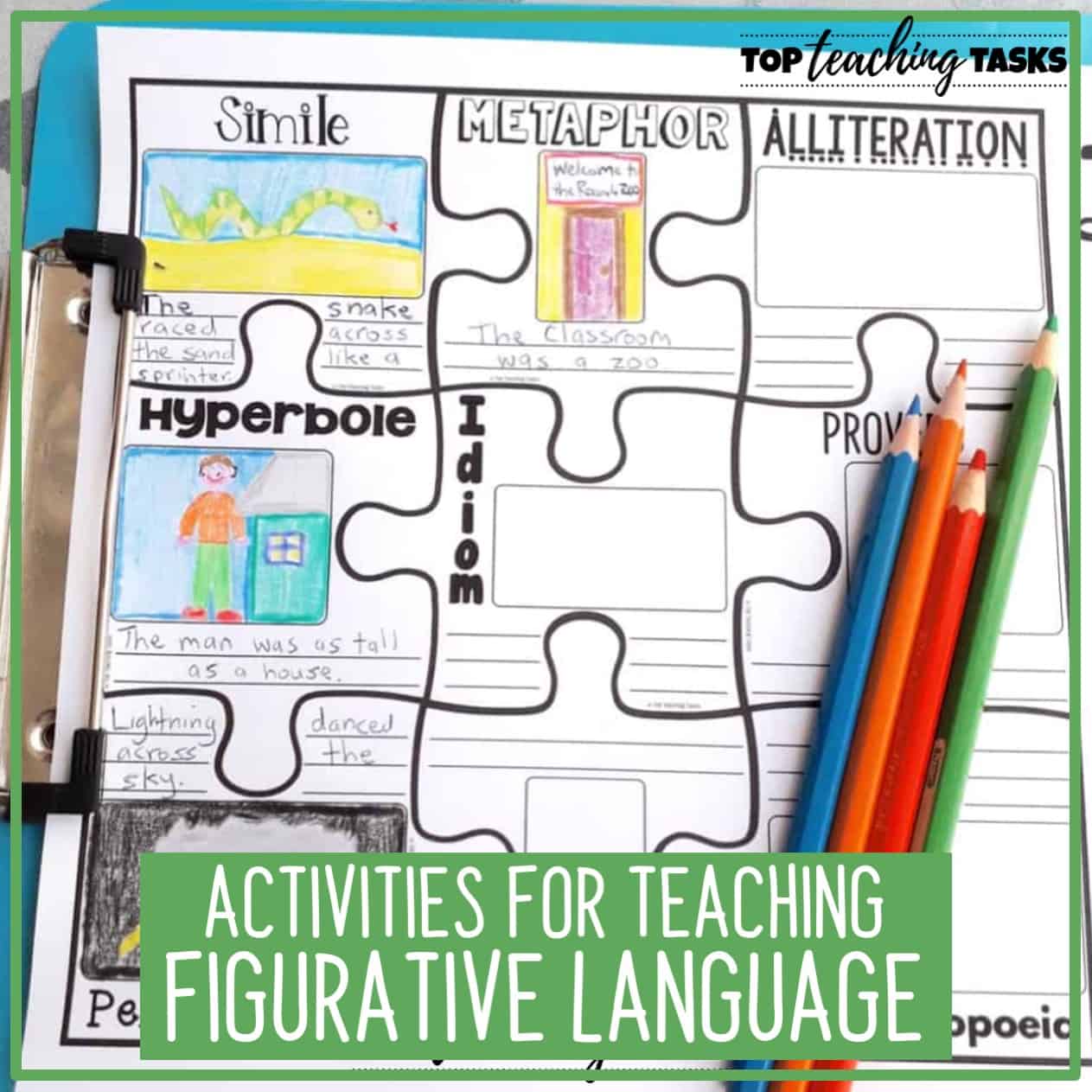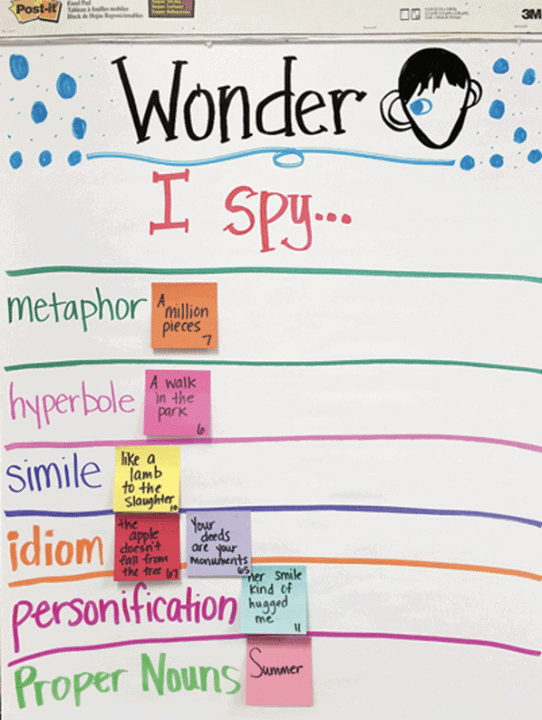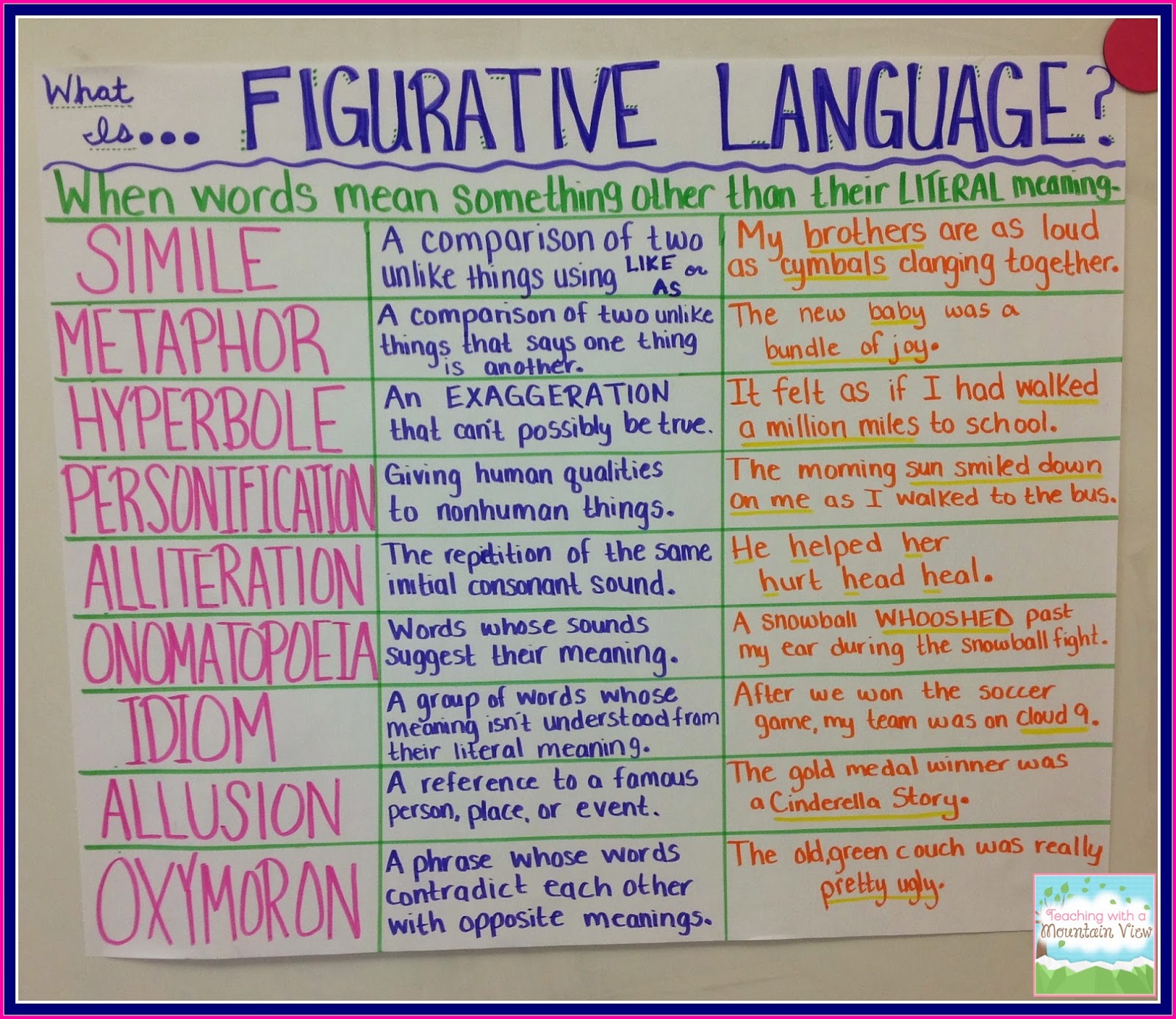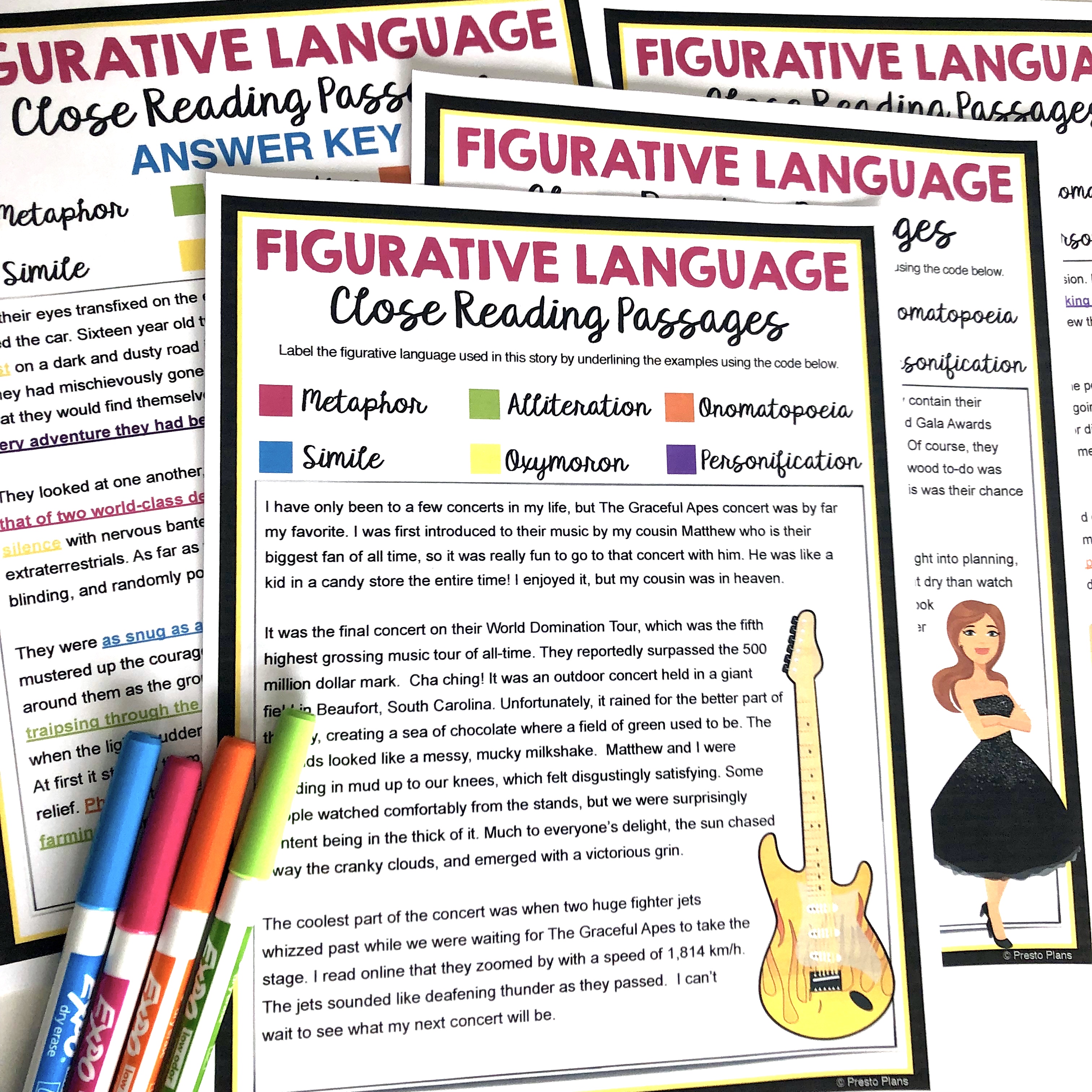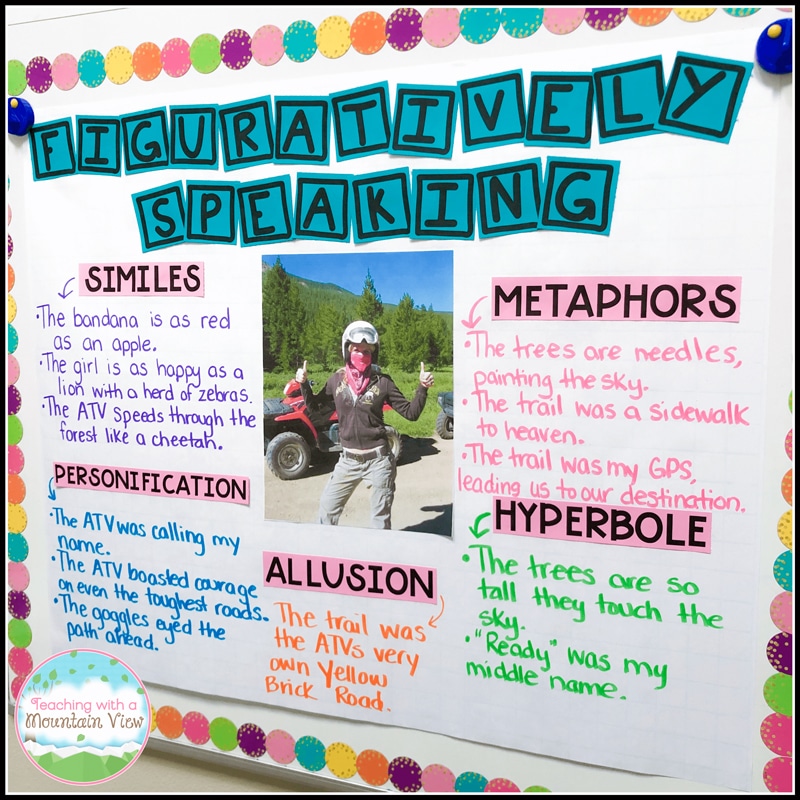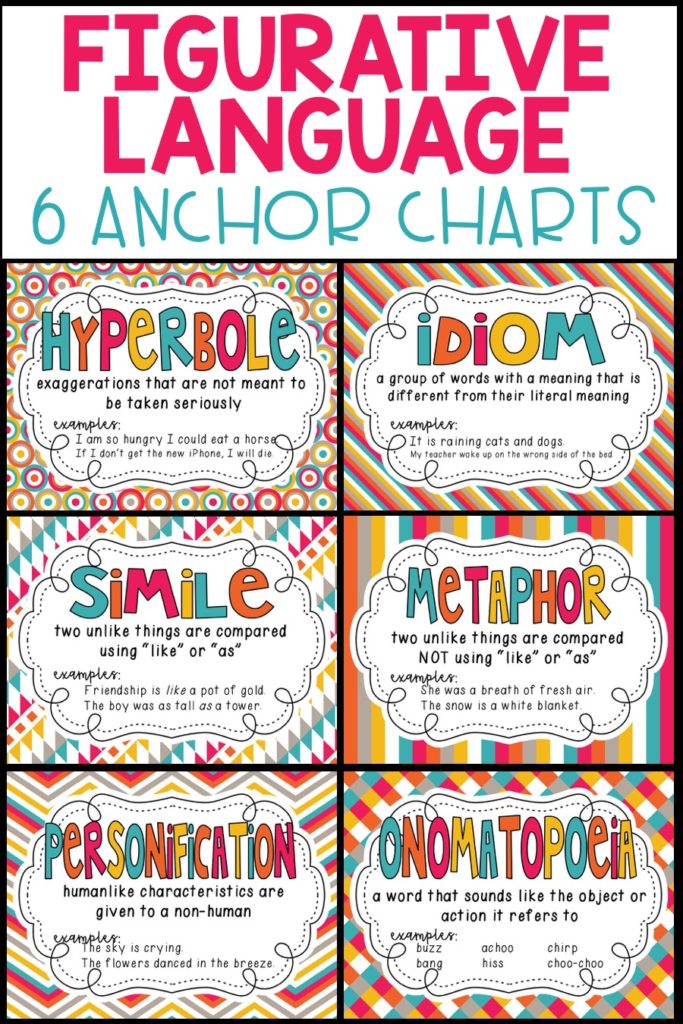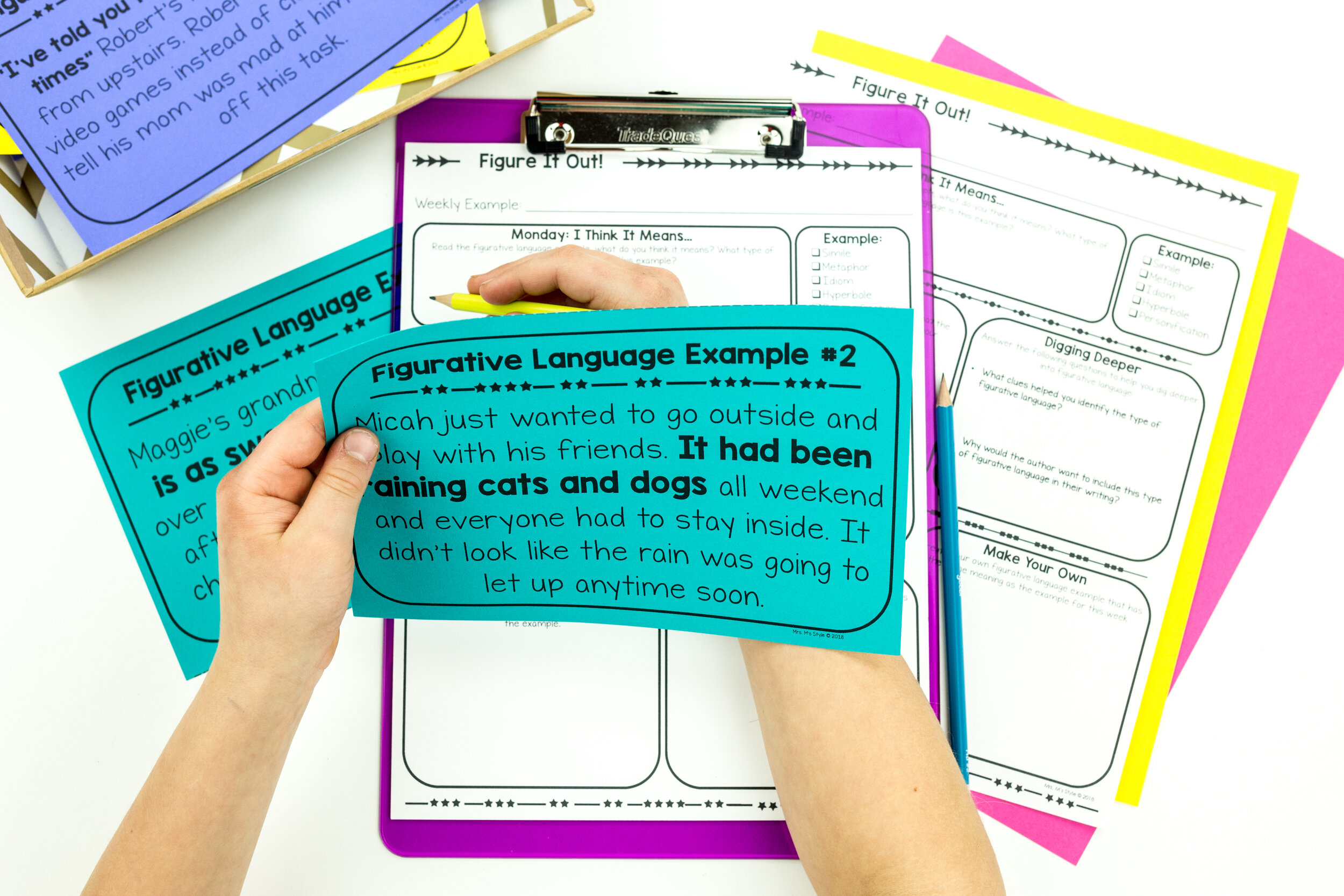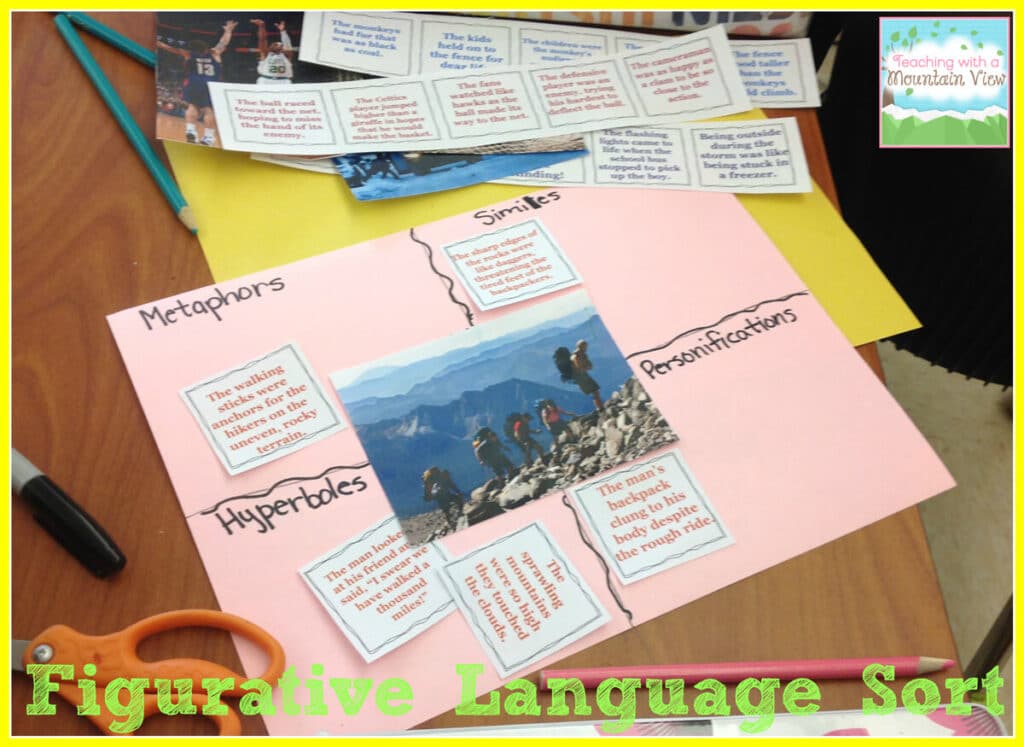Matchless Tips About How To Teach Figurative Language

We’ve already touched upon this when we were discussing the different types of figurative language and here are the main points:
How to teach figurative language. Introduce a small number of related devices at a time the. Then, before finding examples from the play, ask students to look for them in a text that is more. There are so many different types of figurative language and each type has its own set of rules or attributes.
When it says boom have them clap their hand, stomp their feet, or hit. Start teaching the easier forms of figurative language. Try beginning a romeo and juliet unit by introducing figurative language.
This brief animation gives an fun introduction to puns and irony. Challenge students to rewrite the sentence using a different type of. Make it relatable modeling figurative.
These three teaching strategies can help ensure your lessons are as fascinating as a yarn ball is to a cat—and fun to boot! The goal of this activity is to teach students to understand the importance of figurative language and why authors use it to enhance their ideas and emotions. Take an example of figurative language from a book you read with your class and write it on the board.
To play, students will take turns. Have the students act out the words. Use this presentation to teach your students how the author’s use of figurative language achieves a specific purpose.
Explicitly teach the various types of figurative language. For instance, you can start by asking students to think of a time. Each card asks the student to demonstrate their.
